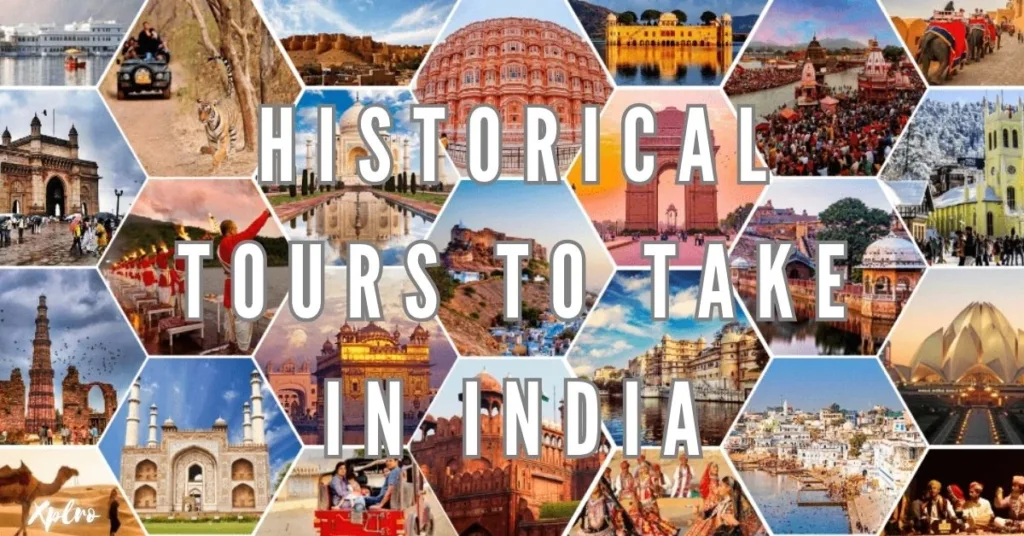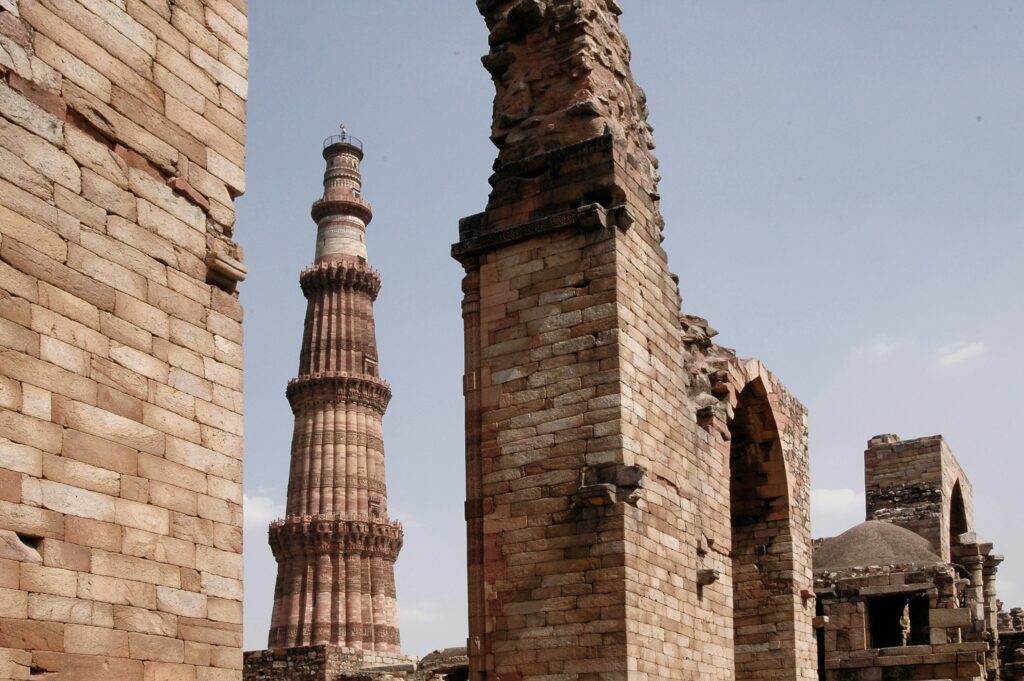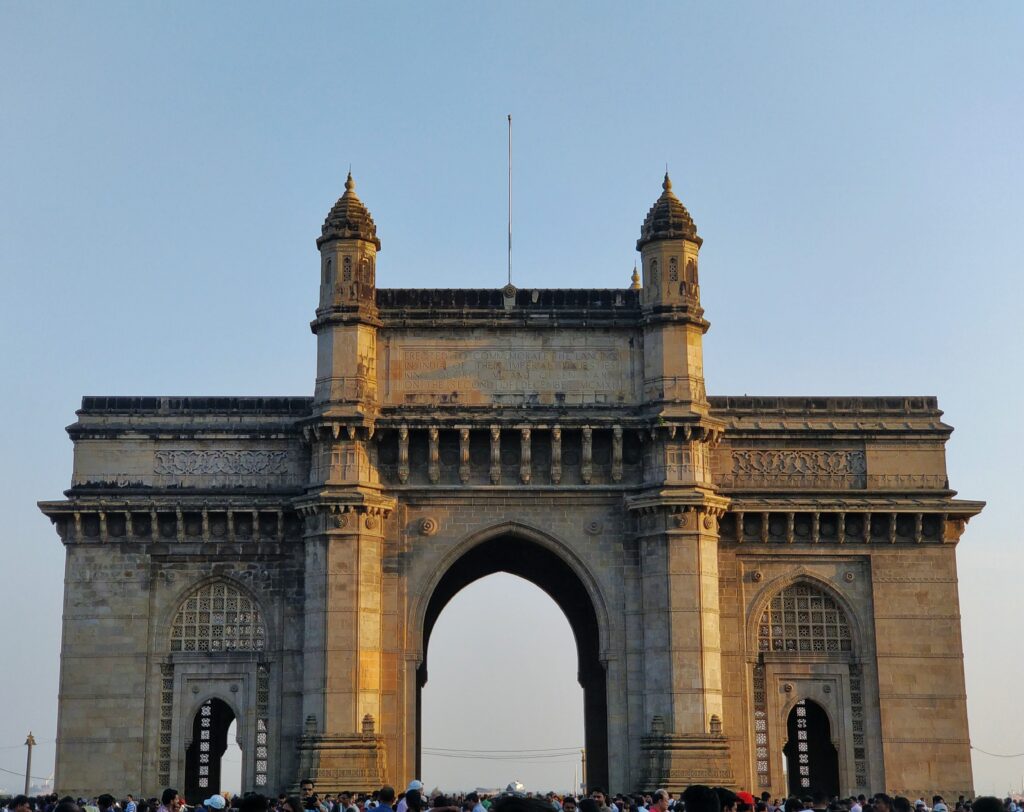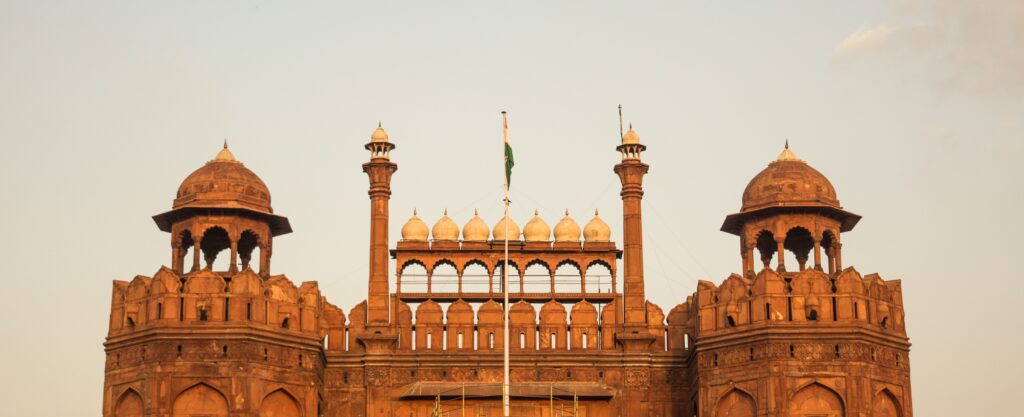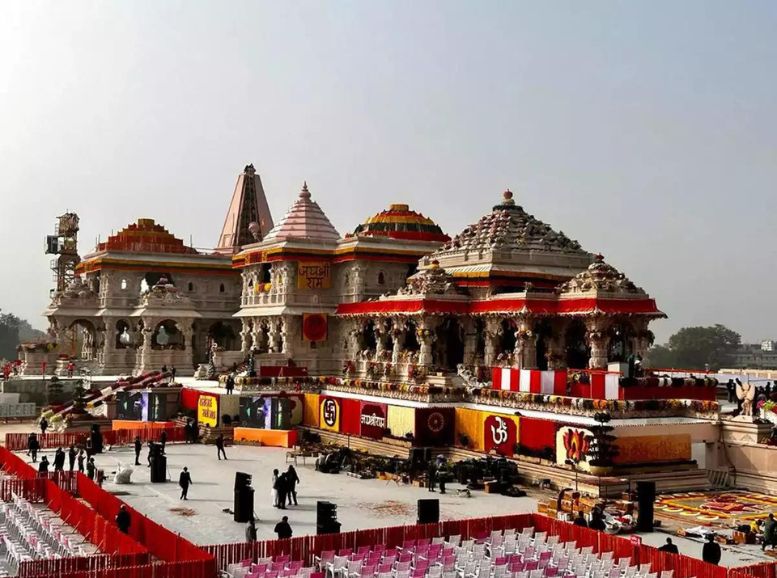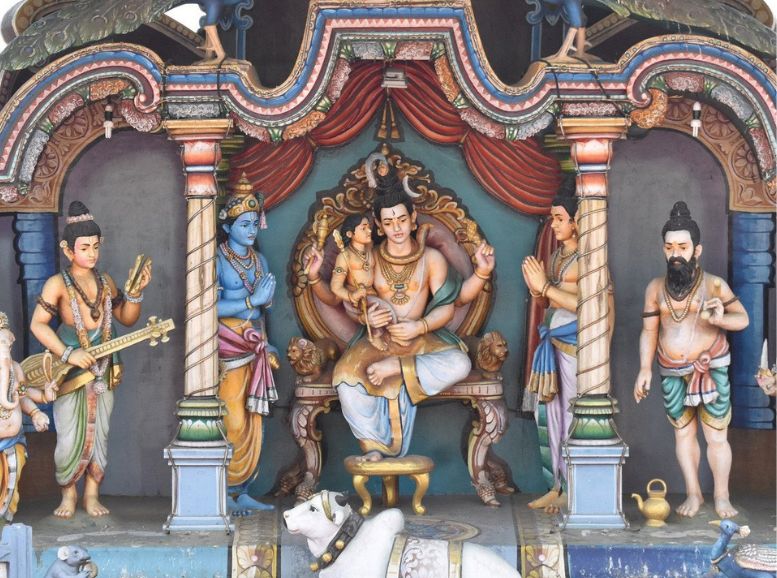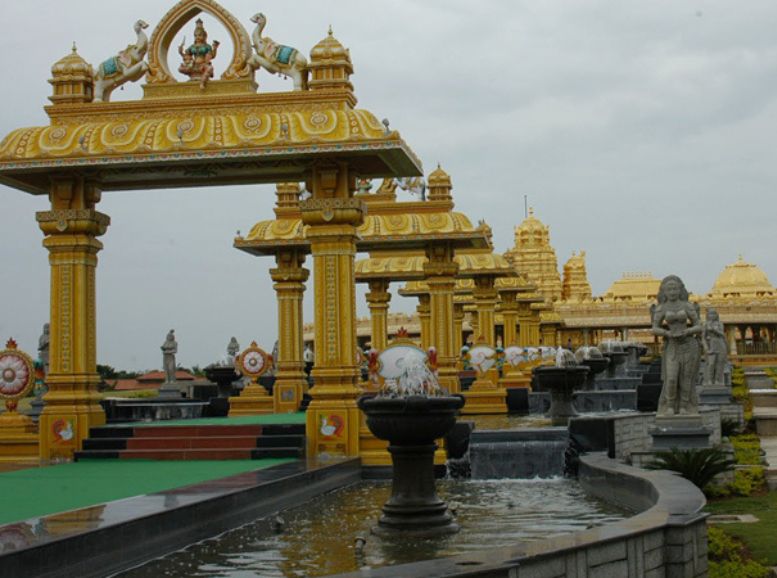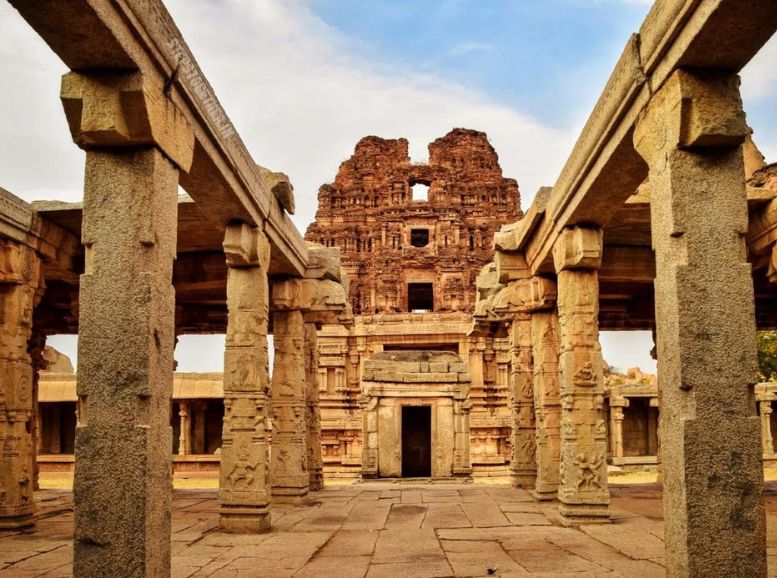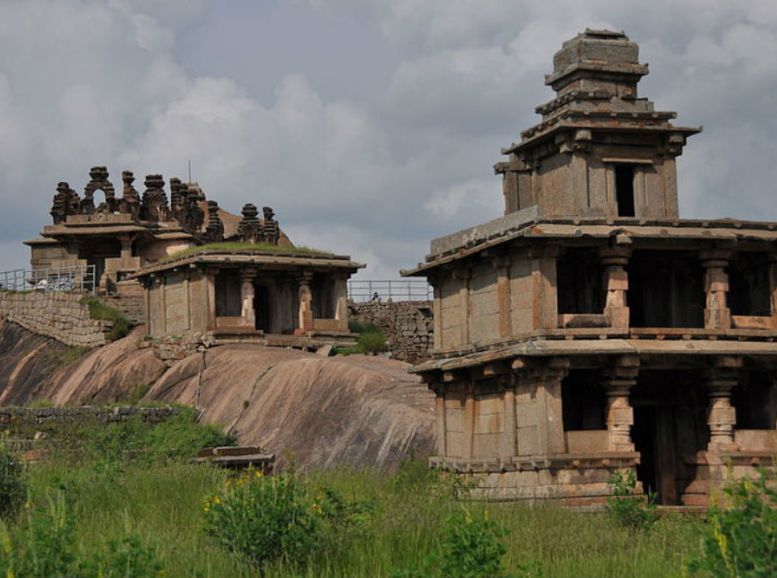Historical Tours to Take in India, a land steeped in history, offers a captivating journey through time. From the majestic forts and palaces of Rajasthan to the ancient caves of Maharashtra, the country’s rich heritage is evident in every corner. Explore the spiritual heart of India in Varanasi, witness the timeless beauty of the Taj Mahal in Agra, or delve into the ruins of the Vijayanagara Empire in Hampi. Whether you’re drawn to the serene backwaters of Kerala, the historical marvels of Delhi, or the cultural vibrancy of Tamil Nadu, India promises an unforgettable historical adventure.
1. The Golden Triangle Tour (Delhi, Agra, Jaipur)
The Golden Triangle, a classic Indian itinerary, offers a captivating journey through three iconic cities: Delhi, Agra, and Jaipur.
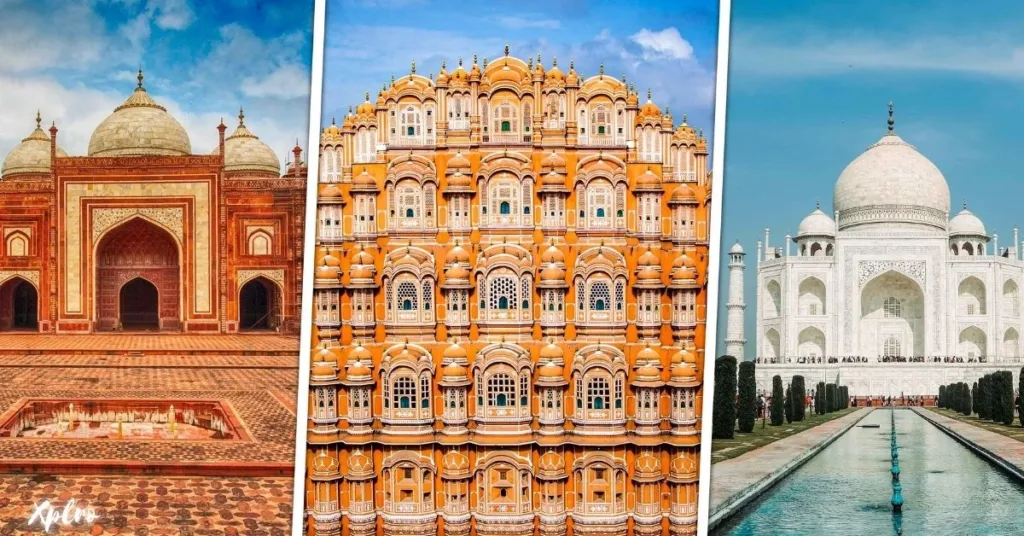

Delhi: Delve into the heart of India’s history, exploring the magnificent Red Fort, the towering Qutub Minar, and the serene Humayun’s Tomb. These architectural marvels showcase the grandeur of the Mughal and Sultanate eras.
Agra: Witness the timeless beauty of the Taj Mahal, an enduring symbol of love. Alongside this iconic monument, explore the majestic Agra Fort, a UNESCO World Heritage Site that reflects the opulence of the Mughal Empire.
Jaipur: Immerse yourself in the royal heritage of Rajasthan. Marvel at the imposing Amer Fort, the intricate Hawa Mahal, and the opulent City Palace, which offer glimpses into the lives of the Rajput rulers.
Best Time to Visit: The ideal time to embark on this historical journey is between October and March, when the weather is pleasant and ideal for sightseeing.
2. Heritage Tour of Rajasthan
Rajasthan, a land of royal splendor and cultural richness, offers a captivating journey through time. Its majestic forts, opulent palaces, and vibrant cities narrate tales of valor, romance, and artistic brilliance.
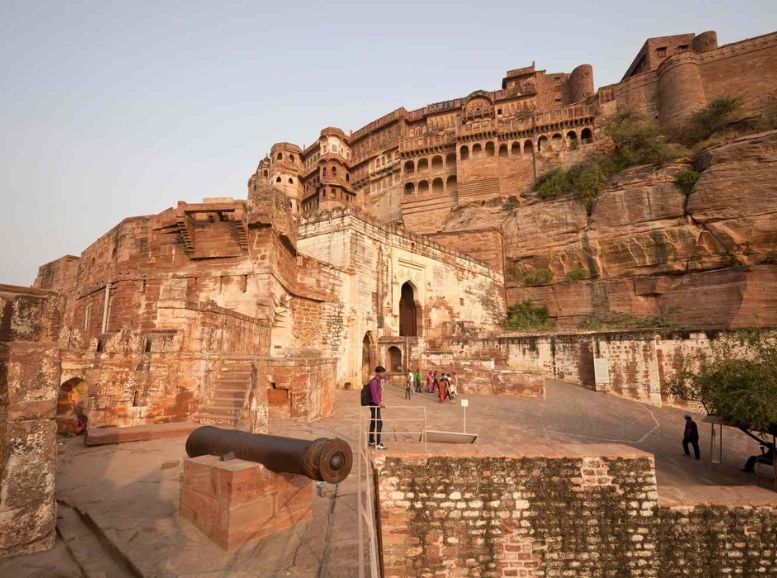

Udaipur: Often called the “City of Lakes,” Udaipur enchants visitors with its stunning Lake Pichola, adorned with beautiful palaces like the City Palace. Romantic boat rides on the lake offer breathtaking views of the city’s skyline.
Jodhpur: The “Blue City” is dominated by the formidable Mehrangarh Fort, a majestic structure that stands as a testament to the Rajput era. The old city, with its vibrant blue-painted houses, adds to the city’s charm.
Jaisalmer: The “Golden City” is home to the magnificent Jaisalmer Fort, a living fort that houses bustling bazaars, ancient temples, and opulent Havelis.
Chittorgarh: A symbol of Rajput valor, the colossal Chittorgarh Fort offers a glimpse into the rich history of Rajasthan. Its imposing structures and dramatic tales of sacrifice make it a must-visit destination.
Best Time to Visit: The ideal time to explore Rajasthan is between October and February, when the weather is pleasant and ideal for sightseeing.
3. Exploring the Ancient Caves of Maharashtra
Maharashtra, a state rich in history and culture, is home to some of India’s most stunning rock-cut caves. These ancient marvels offer a glimpse into the artistic and spiritual traditions of bygone eras.
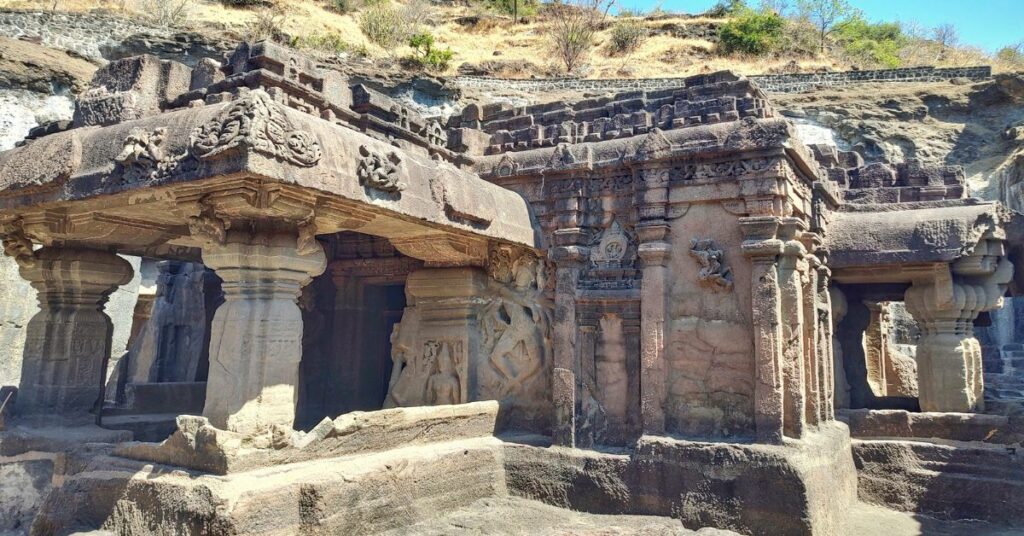

Ajanta Caves: A masterpiece of Buddhist art, these caves are adorned with intricate murals and sculptures depicting the life of Buddha. The vibrant colors and exquisite details of these ancient paintings continue to amaze visitors.
Ellora Caves: A UNESCO World Heritage Site, Ellora Caves showcase the architectural brilliance of Hindu, Buddhist, and Jain civilizations. The Kailasa Temple, carved out of a single rock, is a breathtaking example of Indian rock-cut architecture.
Elephanta Caves: Located on Elephanta Island near Mumbai, these caves are renowned for their colossal sculptures of Hindu deities, particularly the three-headed Shiva. The intricate carvings and serene ambiance make it a spiritual retreat.
Best Time to Visit: The ideal time to explore these historical sites is between November and March, when the weather is pleasant and ideal for sightseeing.
4. Temple Trail in Tamil Nadu
Tamil Nadu, a state steeped in history and culture, is renowned for its magnificent temples that showcase the pinnacle of Dravidian architecture.
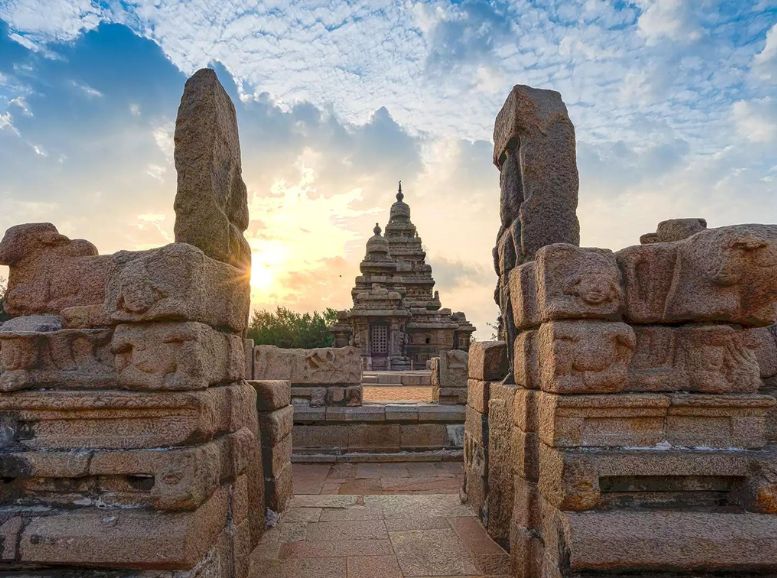

Madurai: The vibrant city of Madurai is home to the iconic Meenakshi Amman Temple, a breathtaking complex adorned with colorful gopurams (towers) and intricate carvings.
Thanjavur: The historic city of Thanjavur houses the Brihadeeswarar Temple, a UNESCO World Heritage Site. This magnificent Chola-era temple is known for its grandeur and the massive vimana (tower) that dominates the skyline.
Mahabalipuram: A coastal town with a rich history, Mahabalipuram is famous for its rock-cut temples and sculptures. The Shore Temple, a masterpiece of Pallava architecture, and Arjuna’s Penance, a massive bas-relief, are among the highlights.
Best Time to Visit: The ideal time to explore Tamil Nadu’s temples is between October and February, when the weather is pleasant and ideal for sightseeing.
5. The Buddhist Circuit Tour
Embark on a spiritual journey through the footsteps of the Buddha, exploring the sacred sites associated with his life and teachings.
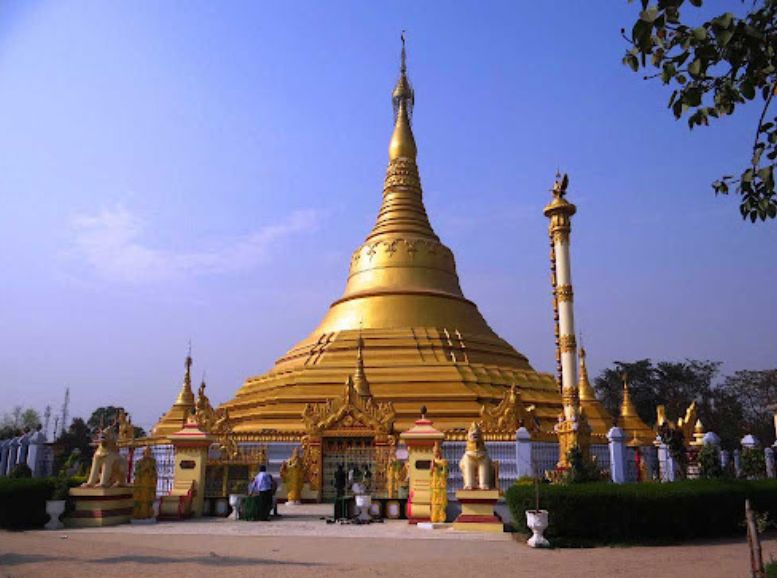

Bodh Gaya (Bihar): The spiritual heart of Buddhism, Bodh Gaya is home to the Mahabodhi Temple, a UNESCO World Heritage Site. This magnificent temple marks the spot where Buddha attained enlightenment under the Bodhi tree.
Sarnath (Uttar Pradesh): Visit Sarnath, the place where Buddha delivered his first sermon. Explore the Dhamek Stupa, a towering monument that commemorates this significant event, and the Sarnath Museum, which houses a rich collection of Buddhist artifacts.
Kushinagar (Uttar Pradesh): Pay homage to Buddha at Kushinagar, the place of his Mahaparinirvana (final nirvana). The Mahaparinirvana Temple houses a colossal reclining statue of Buddha, a serene reminder of his passing.
Lumbini (Nepal): A short journey from India takes you to Lumbini, the birthplace of Buddha. Explore the sacred Maya Devi Temple, the birthplace site, and the serene gardens that surround it.
Best Time to Visit: The ideal time to embark on this spiritual journey is between October and March, when the weather is pleasant and ideal for sightseeing.
6. Walking Through Old Goa
Goa, a coastal paradise, offers more than just sun-kissed beaches. It’s a place where history and culture blend seamlessly, inviting you to explore the remnants of Portuguese rule.
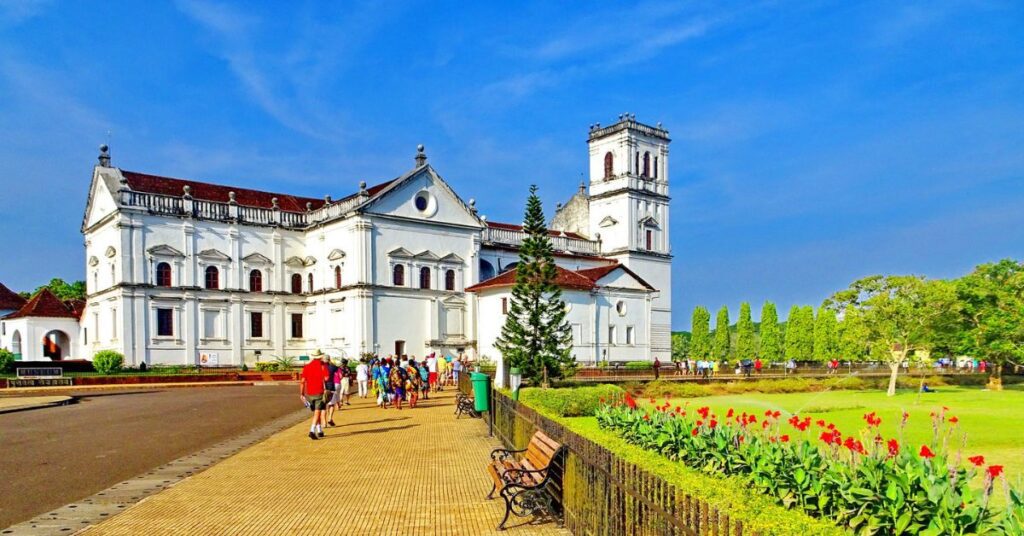

Basilica of Bom Jesus: A UNESCO World Heritage Site, this magnificent church houses the mortal remains of St. Francis Xavier, a revered saint. Its stunning architecture and historical significance make it a must-visit.
Se Cathedral: One of Asia’s largest churches, the Se Cathedral is a masterpiece of Portuguese-Gothic architecture. Its imposing facade and serene interior create a spiritual ambiance.
Old Goa Museum: Delve into Goa’s rich past at the Old Goa Museum. Explore its collection of artifacts, paintings, and sculptures that showcase the influence of Portuguese culture on the region.
Best Time to Visit: The ideal time to explore Goa’s historical sites is between November and February, when the weather is pleasant and ideal for sightseeing.
7. The Ruins of Hampi (Karnataka)
Hampi, a surreal landscape of ancient ruins, offers a glimpse into the grandeur of the Vijayanagara Empire. This UNESCO World Heritage Site is a treasure trove of historical and architectural wonders.
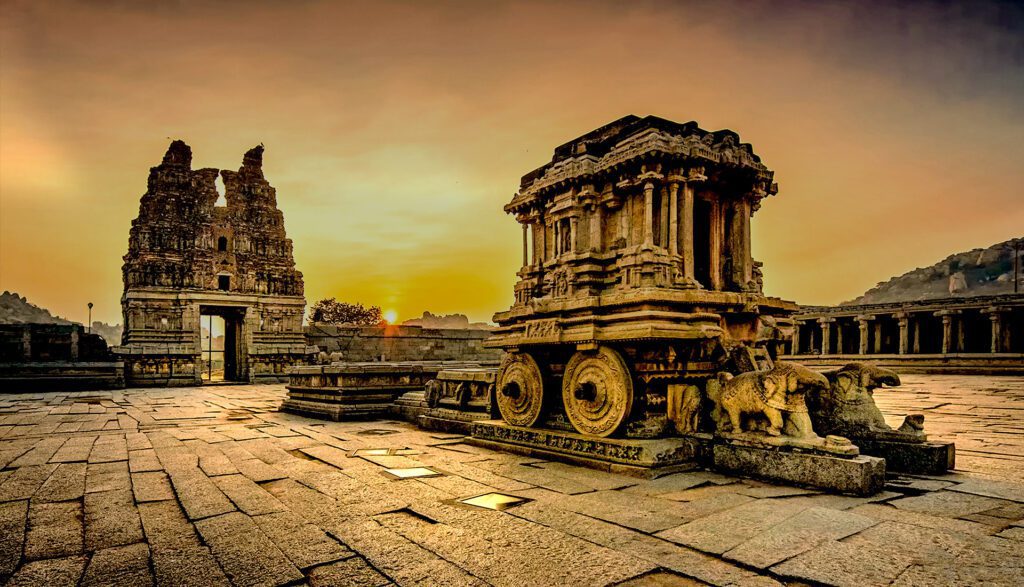

Virupaksha Temple: One of India’s oldest continuously functioning temples, the Virupaksha Temple is a stunning example of Dravidian architecture. Its intricate carvings and serene atmosphere make it a popular pilgrimage site.
Vijaya Vittala Temple: Renowned for its iconic stone chariot and musical pillars, the Vijaya Vittala Temple is a masterpiece of Vijayanagara architecture. The intricate carvings and acoustics of the musical pillars are truly awe-inspiring.
Hampi Bazaar: Once the bustling heart of the Vijayanagara Empire, Hampi Bazaar still retains its charm. Explore its narrow lanes, lined with shops selling handicrafts, souvenirs, and local delicacies.
Best Time to Visit: The ideal time to explore Hampi is between October and March, when the weather is pleasant and ideal for sightseeing.
8. Exploring the Sikh Heritage in Punjab
Punjab, a land of vibrant culture and rich history, is deeply intertwined with Sikhism. Explore the sacred sites and historical landmarks that shaped the Sikh identity.
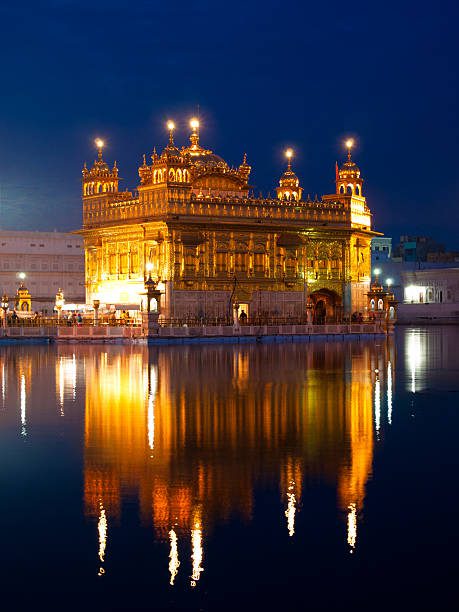

Amritsar: The spiritual heart of Sikhism, Amritsar is home to the Golden Temple, a magnificent shrine adorned with gold leaf. Pay homage to the Guru Granth Sahib, the holy scripture of Sikhism. Also, visit the Jallianwala Bagh memorial, a poignant reminder of India’s struggle for independence.
Anandpur Sahib: A significant pilgrimage site, Anandpur Sahib is where the Khalsa, the Sikh warrior community, was founded by Guru Gobind Singh Ji. Immerse yourself in the spiritual ambiance and explore the historic Gurdwara Sahib.
Wagah Border: Witness the iconic Beating Retreat Ceremony at the Wagah Border, a daily military ceremony that showcases the strong bond between India and Pakistan.
Best Time to Visit: The ideal time to explore Punjab is between October and March, when the weather is pleasant and ideal for sightseeing.
9. Colonial Heritage Walk in Kolkata
Kolkata, a city steeped in history, offers a glimpse into the colonial era of British India. Its grand buildings and bustling streets narrate tales of imperial grandeur and cultural diversity.
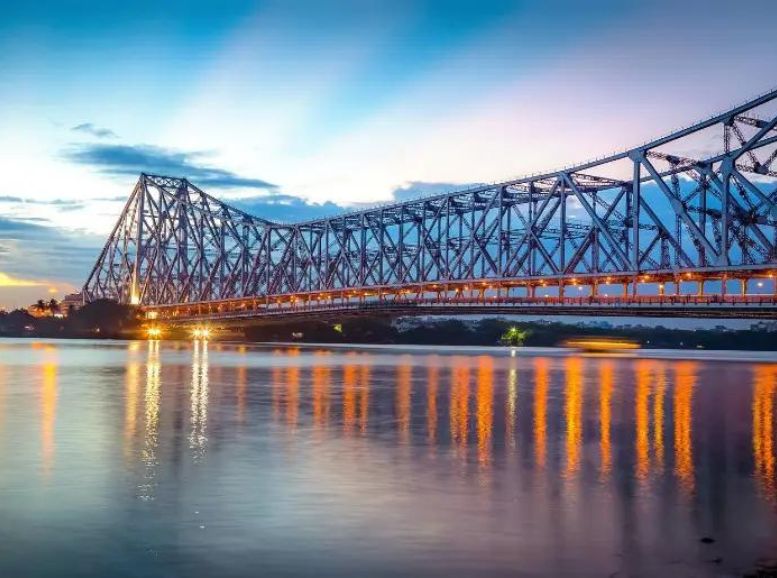

Victoria Memorial: A magnificent white marble building, the Victoria Memorial is a tribute to Queen Victoria. Its stunning architecture, expansive gardens, and art galleries make it a popular tourist attraction.
Howrah Bridge: An iconic landmark, the Howrah Bridge connects Kolkata to Howrah. This engineering marvel is a bustling hub of activity, witnessing the constant flow of vehicles and pedestrians.
Indian Museum: As one of India’s oldest museums, the Indian Museum houses a vast collection of artifacts, including archaeological finds, art, and natural history specimens.
Best Time to Visit: The ideal time to explore Kolkata is between November and February, when the weather is pleasant and ideal for sightseeing.
10. Exploring the Northeast Kingdoms
The northeastern states of India, a land of diverse cultures and breathtaking landscapes, offer a unique blend of natural beauty and historical significance.
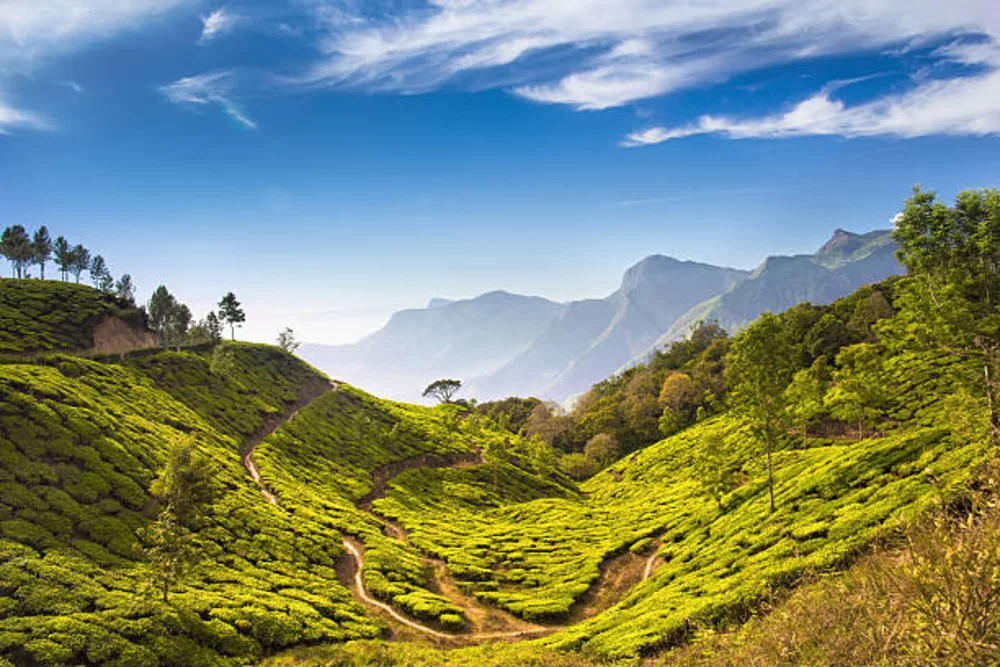

Assam: Step back in time to the Ahom Kingdom in Sivasagar, a city steeped in history. Explore the majestic Rang Ghar, a two-storied amphitheater, and the enigmatic Talatal Ghar, a subterranean structure.
Manipur: Discover the rich heritage of Manipur at Kangla Fort, once the royal palace of the Kingdom of Manipur. Immerse yourself in the history and culture of this ancient kingdom.
Meghalaya: Witness the ingenuity of the Khasi people in Meghalaya. Explore the ancient living root bridges, a marvel of nature and human ingenuity. In Nartiang, discover the monolithic stone pillars, a testament to the rich cultural heritage of the region.
Best Time to Visit: The ideal time to explore the northeastern states is between November and April, when the weather is pleasant and ideal for sightseeing.
Conclusion – Historical Tours to Take in India
Unveiling the rich tapestry of India’s history is an unforgettable adventure. From the royal grandeur of Rajasthan to the spiritual serenity of the Buddhist Circuit, each historical tour on Xplro.com offers a unique portal to the past. Explore the architectural brilliance of ancient caves in Maharashtra, all testaments to India’s diverse heritage. These immersive experiences connect you to the stories of yore, enriching your understanding of India’s remarkable journey through time. So, pack your bags, fire up your camera, and embark on an unforgettable exploration of India’s historical splendor with Xplro.com!
FAQs
1. Which historical sites should I definitely visit in India?
- India is home to countless historic landmarks. Key sites to consider include the iconic Taj Mahal in Agra, the ancient ruins of Hampi in Karnataka, the breathtaking Ajanta and Ellora Caves in Maharashtra, Jaipur’s impressive Amer Fort, and the beautiful Meenakshi Temple in Madurai.
2. When is the ideal time to visit India’s historical monuments?
- The best time to explore India’s historical monuments is from October to March, as the weather is pleasant and ideal for sightseeing, particularly in regions prone to extreme heat or cold, like Rajasthan or the northern plains.
3. What should I wear when visiting religious or historical sites?
- Dressing conservatively is recommended when visiting temples and other religious monuments. Both men and women should cover their shoulders and knees. Additionally, many temples require visitors to remove their shoes before entering.
4. Can I hire guides at historical sites in India?
- Yes, guides are commonly available at most major historical landmarks. Hiring a certified guide is beneficial for understanding the rich history and cultural significance of the places you’re visiting.
5. Do I need any special permits to visit certain historical places?
- While most historical sites in India don’t require special permits, some locations in restricted areas, especially in the Northeast, might. If you’re planning to visit states like Arunachal Pradesh or Nagaland, it’s wise to check for any permit requirements beforehand.
6. Are there specific rules or etiquette to follow at historical sites?
- Yes, visitors should be respectful of the cultural and historical value of these monuments. Avoid touching ancient carvings, keep noise levels down, adhere to posted guidelines, and be sure to dispose of any litter properly.
7. How can I book tickets to popular historical attractions?
- Tickets for major attractions like the Taj Mahal can often be booked online in advance. This not only helps you avoid long queues but also makes your visit more convenient. Websites like the official Archaeological Survey of India (ASI) portal provide ticket booking options.
8. Is photography permitted at historical monuments?
- Photography is generally allowed at many historical sites. However, restrictions may apply in certain areas, such as within temples or where ancient artwork needs to be preserved. Always check the rules posted at each site before taking photos.
9. How safe are historical tours for solo travelers?
- Historical tours in India are usually safe for solo travelers. However, it’s always wise to stay vigilant, particularly in less-crowded areas. Keep your belongings secure, avoid traveling alone at night, and consider using trusted tour operators for guided experiences.
10. Are there family-friendly historical tours in India?
- Many historical tours are great for families, such as visits to the Taj Mahal, the forts and palaces of Rajasthan, Mysore Palace, and the churches of Old Goa. Sites like Hampi and Mahabalipuram also offer engaging experiences for kids fascinated by history and architecture.
11. How can I avoid large crowds at historical sites?
- To escape crowds, plan to visit popular attractions early in the morning or on weekdays. Booking tickets online and choosing guided tours with off-peak starting times can also make for a more peaceful experience.
12. Are accommodations available near major historical landmarks?
- Yes, there are numerous accommodation options near key historical sites, ranging from budget-friendly guesthouses to luxury hotels. Cities like Jaipur, Udaipur, and Agra even offer heritage hotels, where you can stay in former royal residences for an unforgettable experience.
